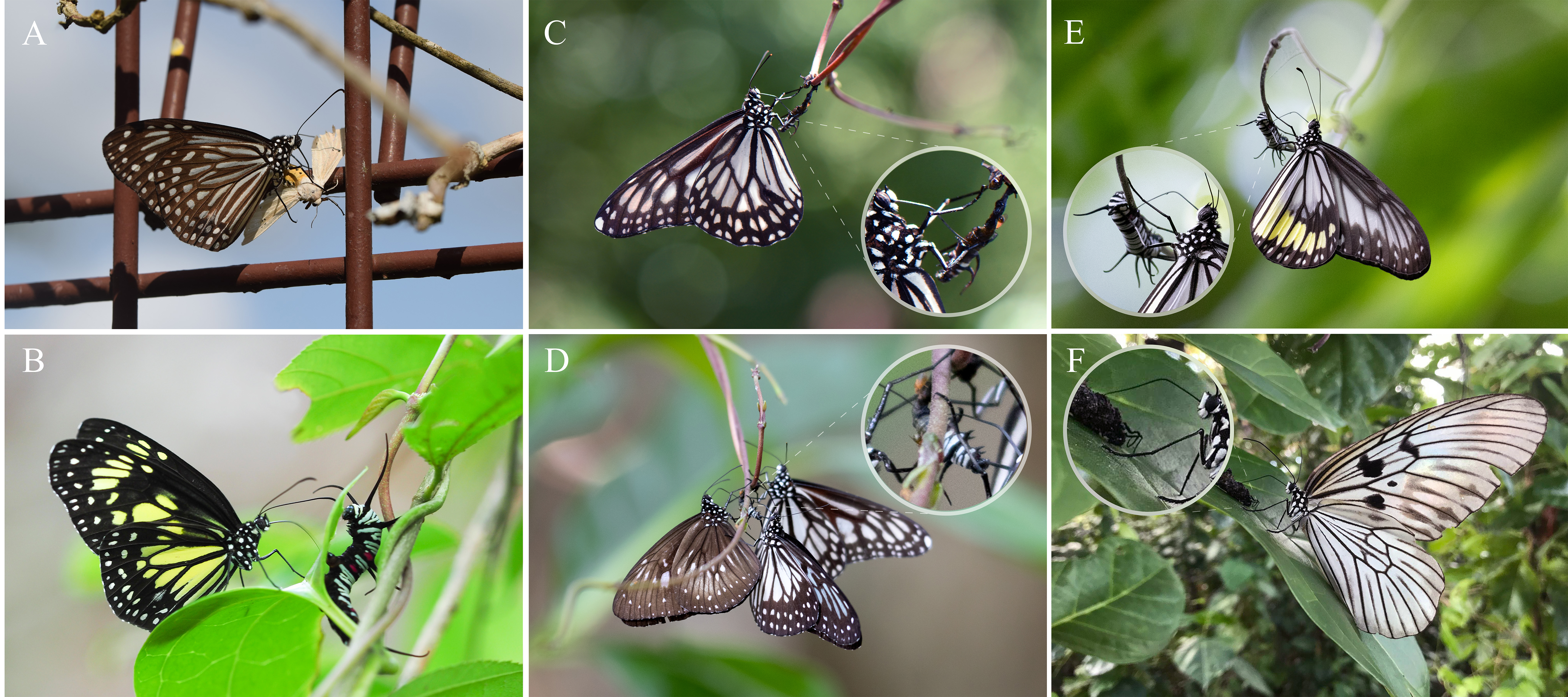News release
From:
Charles Darwin and Alfred Wallace are only right most of the time. A butterfly’s behaviour towards members of their own subfamily (Danainae) is among the latest discoveries that raises questions in insect evolutionary theory.
Scientists have discovered that milkweed butterflies harass, subdue, and subsequently feed on live, dead, and dying caterpillars belonging to other milkweed butterflies – that is, their family’s young.
Caterpillars are the larval stage of butterflies and moths.
Caterpillars feed on toxic plants, sequestering chemicals for self-defence. The chemicals are noxious and unpalatable to predators, such as birds, and are later manifested in butterflies’ bright, warning colours.
These chemicals also help male butterflies produce mating pheromones, which function as nuptial ‘gifts’ to females during courtship. To build upon this innate toxicity, male butterflies supplement their diet by seeking out additional sources of chemicals. Most frequently, these are obtained through plant sources, but in the forests of North Sulawesi, Indonesia, it appears that they have developed a taste for caterpillars – all in their quest to increase their supplies of this love drug, the researchers posit.
“This is the first time the behaviour has been reported,” said lead author, PhD candidate Mr Yi-Kai (Kai) Tea from the University of Sydney School of Life and Environmental Sciences.
“The behaviour does not fit neatly in the traditional modes of predation, parasitism, or mutualism, and so presents a new challenge to evolutionary theory. We have coined it ‘kleptopharmacophagy’ – chemical theft for consumption.”
Ecology’s The Scientific Naturalist has published the research.
Drinking from ‘wounded and oozing’ caterpillars
To supplement the chemical supplies they obtain as caterpillar juveniles, the butterflies engage in a behaviour known as “leaf-scratching”. “They damage [chemical containing] plants with their sharp tarsal claws, liberate plant juices and imbibe them using their long, curly tongues,” said Mr Tea.
Scratching at live caterpillars, however, had never previously been reported. “Caterpillars are essentially bags of macerated leaves; the same leaves that contain these potent chemicals the milkweed butterflies seek out. To adult butterflies, they may simply be an alternative source of chemicals on which to feed,” said Mr Tea.
Mr Tea observed this unusual behaviour with colleagues in 2019, where, in the coastal forests of North Sulawesi, he observed adult male milkweed butterflies scratching at both leaves and live and dead caterpillars and apparently imbibing their juices. “The caterpillar larvae would contort their bodies rapidly in what appeared to be futile attempts to deter the scratching,” he said.
While milkweed butterflies have been documented to feed on carcasses of other chemical-containing insects, this is the first time the behaviour has been reported extending onto living insects of the same order; in this case, their own larvae. Yet, it remains unclear whether the caterpillar fatalities were a direct result of the scratching.
“Nonetheless, these simple observations raise questions about the ecology of these well-known butterflies, providing numerous opportunities for future studies,” said Mr Tea. “For example, which exact compounds are these butterflies interested in? Does this behaviour occur elsewhere in the world?”
Multimedia





 Australia; NSW; SA
Australia; NSW; SA



